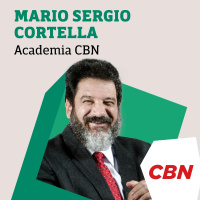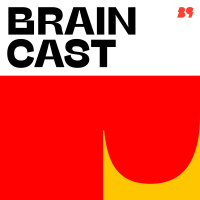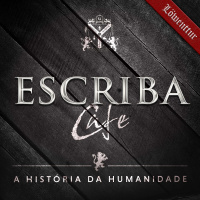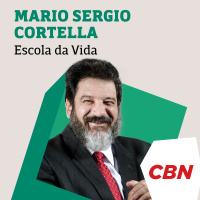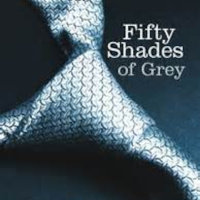Synopsis
Educator Innovator is an initiative powered by the National Writing Project and provides a hub for educators and partners who are re-imagining learning in and out of school.
Episodes
-
GrowingUpAmericanMuslim
24/03/2017 Duration: 59minWe live in contentious and divisive times that have affected specific communities in very real ways. In particular, rampant stereotyping of Muslims in the United States today, coupled with surveillance and privacy concerns, have the power to paralyze, damage and isolate young American Muslim in classroom settings. Inadequate understanding of Islam also makes it difficult for educators to help students move past such stereotyping in productive ways. In this webinar, educators, scholars and students convene to discuss the experiences of American Muslim students and teachers inside and out of the classroom. Participants will consider the impact of Islamophobia, how—and if—to tackle politics in the classroom, how to create safe spaces for students from all backgrounds, and ways to support diverse learning.
-
The First 100 Days with #2nextprez
13/02/2017 Duration: 57minDid you love Letters to the Next President? Are you looking for ways to keep students energized about issues that matter to them? Join us for a discussion with educators who are using the first 100 days of the new administration to continue (and start!) conversations, projects and civic action around issues important to students. The first 100 days goes through the end of April, so there’s plenty of time to get inspired.
-
Engaging Teens as Changemakers: A KidsTales.org Case Study
13/02/2017 Duration: 58minHow can you engage teens to be Changemakers? KidsTales.org, a nonprofit founded by a kid for kids, presents their changemaking story and explores how to create, engage, and sustain teen changemakers. Kidstales.org brings creative writing workshops, taught by teen instructors, to 8 to 12 year old kids that do not have access to writing experiences outside of school. During a Kids Tales workshop, kids spend a week creating their very own short story. At the end of the week, the stories are assembled in a collection and self-published as a real, physical anthology. This past summer Kids Tales taught workshops in five countries, serving 400 kids and engaging 100 teen writing instructors.
-
Considerations For Selecting Primary Sources
12/01/2017 Duration: 54minThis webinar highlights strategies for representing multiple perspectives and addressing difficult topics, and discusses criteria for selecting and using primary sources in instruction, including thinking about audience, historical context, and point of view.
-
Visible Thinking Routines And Primary Sources
03/01/2017 Duration: 58minIn this webinar, education experts model how to use visible thinking strategies to enhance the power of primary sources in your classroom. A wide variety of easy-to-use routines are modeled and discussed.
-
Image, Sound, and Story: Teaching Literacy for a Visual Culture
09/12/2016 Duration: 50minImage, Sound, and Story is a professional development program from the Jacob Burns Film Center preparing teachers in grades 5-10 to integrate viewing and creating media into their classroom culture and literacy instruction. The curriculum will eventually expand to reach Pre-K – 12. In addition to sharing excerpts of the unique and innovative approach of Image, Sound, and Story, the webinar shares some brief case studies of how it is being implemented in 5th-10th grade classrooms. Teachers’ lesson plans and student work illustrate how visual thinking skills can influence reading and writing literature, nonfiction, and persuasive texts, all while supporting the Common Core Standards. With accessible technology, engaging content, and seamless integration amongst traditional and contemporary meaning-making, participants will understand how close-reading and critical thinking skills can be developed and applied in a culture dominated by the moving image.
-
Learning at the Intersections of Science, Literacy, Gaming, and Making
08/12/2016 Duration: 59minMuseum educators and teachers from Philadelphia share some of the things they have learned from designing learning for middle school youth in out-of-school time spaces at the intersections of science, literacy, gaming, and making. This webinar discusses experiences and questions that emerge from the GAME ON! Philadelphia project through which youth explore the nature of gaming alongside natural science concepts. The discussion also focuses on youth creating their own games that integrate new science knowledge and that can be shared with public audiences.
-
Introducing the Library of Congress
05/12/2016 Duration: 56minIn this webinar, guests explore what the Library of Congress has for teachers, including lesson plans and primary source sets, webinars and professional development opportunities, social media channels, and more. They also share their top tips and favorite resources.
-
Exploring and Expanding Possibilities for Integrating Writing in Science Classrooms
05/12/2016 Duration: 01h02minThis webinar explores how writing can support students in (1) strengthening conceptual understanding of scientific phenomena, (2) engaging in practices related to thinking and communicating like scientists, and (3) moving science knowledge and practices beyond subject and school boundaries into action in local and global communities. The webinar also includes a discussion about writing in science classrooms with an eye toward audience, purpose, genre, mode, argument, evidence, inquiry, and text.
-
Listening, Leading And Learning In Community During The 2016 Election
21/09/2016 Duration: 58minHow do teachers invite students to both be themselves and become a community in these times? Alan Singer has been sharing suggestions at Huffington Post for teachers during this election season, writing, "Our obligation is not to maintain some abstract form of 'balance' in the classroom, but to help students become critical thinkers who learn to listen to others, evaluate their statements carefully and respectfully, and support conclusions with evidence." Participants in this webinar explored this assertion further and discussed how this election season can be a time to uncover students' passions and interests and learn together how to live in community. This hangout was produced in support of Letters to the Next President 2.0, a project engaging youth in civic participation on issues and topics that matter to them in the US Presidential Election. It was also co-streamed at connectedlearning.tv.
-
From Research To Public Voice- Supporting Youth's Writing For Civic Advocacy
14/09/2016 Duration: 01h11sYouth’s research into civic issues that engage their interests and ignite their passions can represent powerful learning experiences. Yet the genre of the academic research paper isn’t the most effective means for engaging in civic advocacy. In this session, the National Writing Project introduced a draft of its Civically Engaged Writing Analysis Continuum (CEWAC), comprised of two interconnected rubrics - one focused on research about civic issues and the second on public arguments. Teacher-leaders engaged in this work shared their students’ writing and considered the implications of these tools for teaching and learning, focusing primarily on youth’s public arguments. This hangout was produced in support of Letters to the Next President 2.0, a project engaging youth in civic participation on issues and topics that matter to them in the US Presidential Election. It was also co-streamed at connectedlearning.tv.
-
Using The ATtiny85 Microcontroller For Intermediate Paper Circuitry Projects (Part 3 Of 3)
09/09/2016 Duration: 57minJoin NEXMAP for a back to school series, “Literacy, Craft, Civic Engagement – A Paper Circuitry Project for L2P 2.0,” spanning August and September that explores how young people can use paper circuitry to voice their opinions and showcase creative expression. The NEXMAP team will help both educators and young people explore how to use paper circuitry to write a letter to the next president and provide templates for easily doing so. The third and final webinar on 9/8 featured Jeannine Huffman and highlighted opportunities for more complex paper circuitry projects using the ATtiny85 microcontroller. This hangout was produced in support of Letters to the Next President 2.0, a project engaging youth in civic participation on issues and topics that matter to them in the US Presidential Election.
-
Using Paper And Electronics To Support Multiple Literacies And Creative Learning (Part 2 Of 3)
26/08/2016 Duration: 01h15sJoin NEXMAP for a back to school series,"Literacy, Craft, Civic Engagement – A Paper Circuitry Project for L2P 2.0," spanning August and September that explores how young people can use paper circuitry to voice their opinions and showcase creative expression. The NEXMAP team will help both educators and young people explore how to use paper circuitry to write a letter to the next president and provide templates for easily doing so. This series of webinars features teacher leaders from California, Texas and Ohio and addresses the many ways paper and electronics support multiple literacies and creative learning. The first session, Part I, on 8/18, introduced sample projects from contributors Kate Hodges, Molly Adams and Anna Marie Warren. The second session, Part II on 8/25, dug into practical implementation strategies for working with students and sharing the approach and practices with colleagues. The third and final webinar on 9/8 will feature Jeannine Huffman and highlight opportunities for more complex pap
-
Getting Started With Paper Circuitry (Part 1 Of 3)
19/08/2016 Duration: 56minJoin NEXMAP for a back to school series,”Literacy, Craft, Civic Engagement – A Paper Circuitry Project for L2P 2.0,” spanning August and September that explores how young people can use paper circuitry to voice their opinions and showcase creative expression. The NEXMAP team will help both educators and young people explore how to use paper circuitry to write a letter to the next president and provide templates for easily doing so. This series of webinars features teacher leaders from California, Texas and Ohio and addresses the many ways paper and electronics support multiple literacies and creative learning. The first session, Part I, on 8/18, introduces sample projects from contributors Kate Hodges, Molly Adams and Anna Marie Warren. This hangout is produced in support of Letters to the Next President 2.0, a project engaging youth in civic participation on issues and topics that matter to them in the US Presidential Election. It will also be co-streamed at connectedlearning.tv. http://educatorinnovator.o
-
Teaching Debate And Media Literacy In A Polarized Political Climate
21/07/2016 Duration: 01h01minIn this hangout, participants asked what impact the current political climate, often characterized by its divisiveness, has on teaching debate and media literacy. Educators and experts in the field discussed why supporting students to have critical conversations while remaining open to others’ points of view is so important in this atmosphere. Guests also discussed how students can develop and hone habits of inquiry in the age of the 24-hour news cycle and reporting on violence and national tragedy.
-
Looking Back, Learning Forward
14/07/2016 Duration: 01h10sHistorical primary sources can support learning that is grounded in authentic, open-ended problems of today. Join educators for a discussion about teaching with primary sources as part of a sustained inquiry process throughout which youth share learning, solutions, and products beyond the classroom. Guests discussed the questions about matching primary sources with problem- and project-based learning. The conversation also pointed to specific resources and teaching strategies available from the Library of Congress. This hangout was produced in support of Letters to the Next President 2.0, a project engaging youth in civic participation on issues and topics that matter to them in the US Presidential Election. It was also co-streamed at connectedlearning.tv. http://educatorinnovator.org/webinars/looking-back-learning-forward-supporting-project-and-problem-based-learning-with-historical-primary-sources/
-
Make A Video Letter With Your Phone
13/07/2016 Duration: 55minView this conversation about how to use your mobile phone to tell stories and write a video “letter” to the next President. Learn storytelling, production, and distribution techniques to explore the possibilities of using readily available tools and to reach a broad audience—the power is in your own hands! Participants from the Bay Area Video Coalition (BAVC) and Fusion, along with educators and student guests, discussed their experiences creating videos to tell stories and voice their opinions. This hangout was produced in support of Letters to the Next President 2.0, a project engaging youth in civic participation on issues and topics that matter to them in the US Presidential Election. It was also co-streamed at connectedlearning.tv. http://educatorinnovator.org/webinars/make-a-video-letter-with-your-phone/
-
What Makes A Good Problem?
01/07/2016 Duration: 52minMath Teachers’ Circles are professional learning communities focused on collaborative problem solving. In this webinar, Math Teachers’ Circle leaders talked about what makes a good problem, including the difference between a problem and an exercise, the art of problem posing, and how differentiated learning can emerge naturally from the exploration of rich, multifaceted problems. Although the discussion was grounded in mathematics, many of the concepts translated to other disciplines as well. http://educatorinnovator.org/webinars/what-makes-a-good-problem/
-
Spoken Word Letters
29/06/2016 Duration: 56minSpoken word, or oral poetry, can help students critically examine dominant narratives to make sense of their own experience through language and express themselves using their own vernacular. As part of a special series designed for the Letters to the Next President 2.0 project, this L2P 2.0 Make Cycle/Media Make hangout is a chance for students to create oral “letters” to the next president. This hangout is hosted by KQED and Youth Speaks with educators and partners from the National Writing Project and YOUmedia Learning Labs Network. http://educatorinnovator.org/webinars/l2p-2-0-media-make-spoken-word-letters/
-
Arguing The CRWP Way- Establishing A Classroom Climate For Inquiry And Generosity
22/06/2016 Duration: 50minJoin members of the College-Ready Writers Program (CRWP) leadership team as they discuss how CRWP materials and principles encourage students to treat opposing views with respect and generosity. Students who write from CRWP materials start with an inquiry stance towards an issue and revisit their opinion in light of multiple, often opposing points of view. Such experiences for students are designed to create a classroom culture that values civil discourse and supports students in becoming effective participants in civic communities. This hangout is produced in support of Letters to the Next President 2.0, a project engaging youth in civic participation in issues and topic that matter to them in the US Presidential Election. It will also be co-streamed at connectedlearning.tv. http://educatorinnovator.org/webinars/arguing-the-crwp-way-establishing-a-classroom-climate-for-inquiry-and-generosity/











